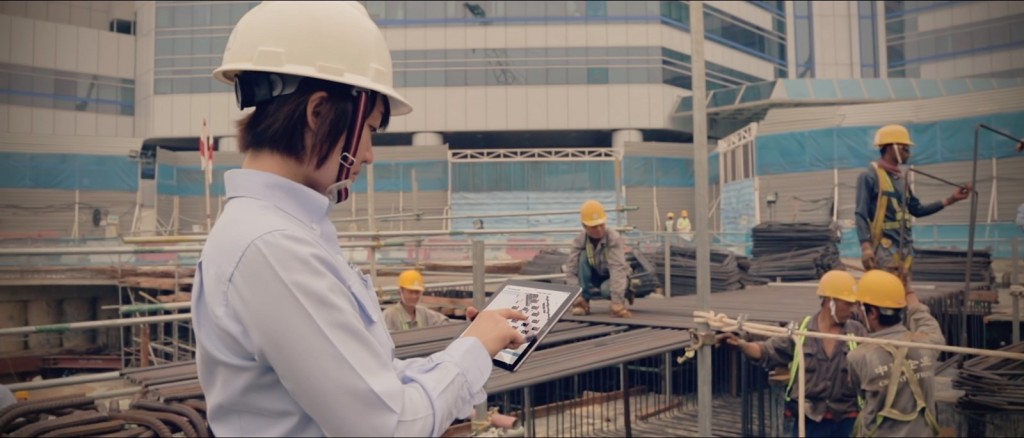How is Technology Affecting the Digital Transformation of the Construction Industry?

Some commodities that may seem like a standard in our own homes or businesses have taken longer to pass the tests of the construction sector. From fibre-speed construction site broadband to automated robotics and cryptocurrency, technology has finally caught the attention of construction professionals that can be fully utilised with little to no error.
Below, we take a look at the top five construction technology trends to look out for within the construction industry and how they are helping make worksites safer, more efficient and make sure the best designs possible are created to bring the best results.
1. Big Data
Today’s biggest resource is data and with over 2.5 quintillion bytes of it being generated every day, it can seem like an impossible task making sense from it.
Big Data can analyse extremely large sets of data to find hidden patterns and trends that can be turned into actionable insights. Previously unknown correlations can be used to create informed decisions for the business and it provides one of the most valuable pieces of technology in the construction industry.
Historical data finds patterns and probabilities to street projects towards success and avoid any risks or pitfalls.
Data from previous traffic and weather, alongside business and community activity, can help to determine the optimal way to phase in certain construction activities.
By pulling data from previous projects that have been collected from machines with sensors, Big Data can reveal the extent of how these machines were used and lead to insights into what is worth hiring and what is frequently used and may be worth investing in purchasing.
Design goals can be helped with the use of tracking energy conservation, especially within shopping centres and office blocks. Big Data can make sure that energy consumption meets the design goals by tracking traffic and levels of flexing in bridges to determine any out of bounds events.
2. The Internet of Things (IoT)
The Internet of Things has been prevalent in everyday lives but is now becoming more valuable in the construction industry and is transforming the way professionals work.
IoT is when smart devices and sensors are controlled by a central platform, with the ability to share data with each other. This is making elements of the business more efficient, smarter and safer.
Smart machinery is being used to perform relative task while having the intelligence to maintain itself. A common example is cement mixers being able to alert staff when they are running low, alleviating the manual task of checking and allowing employees to continue with other tasks.
Site footfall is also being monitored using the IoT, not only providing higher accuracy but also removing the need for paperwork and reducing the time to document this.
Geo-location is improving safety; once danger zones are identified on-site, workers using wearable technology can be instantly alerted if they accidentally enter these areas. This is also being implemented to increase safety while social distancing, letting employees know when they are too close to each other.
Sensors in vehicles and other machinery are reducing the carbon footprint of each site. These sensors can detect when these machines are not in use and automatically turn engines off.
3. 5G and Wi-Fi 6
A reliable, strong internet connection is needed within almost every business across the world and the construction industry is no exception. Large amounts of data require faster download speeds, which are not better than ever before.
5G not only has faster speeds but also better handling of traffic. Wi-Fi 6, the latest innovation in wi-fi technology, is proving leaps and bounds above its predecessors.
With cellular improvements across the country, mobile broadband is being a popular alternative to fixed lines and more sites are moving towards this with reduced installation times and more flexibility.
4. Blockchain Technology
Blockchain is a form of cryptocurrency and a common example of this is Bitcoin. This method of payment is peer-to-peer controlled by a computer network and does not require a central authority to transfer payments. This means all payments happen between the users, frequently a client and construction business, but can also be used to pay suppliers.
As a trustworthy administrator for all parties involved, any previous concern regarding payment is removed.
Payment is stored upon agreement between the parties of the contract and is released when all parties are satisfied. This removes the worry of unpaid contracts while clients know they will not be left out-of-pocket for any unfinished or inadequate projects.
5. Robotics and Drones
Construction is one of the least automated sectors and is heavily focussed on manual-intensive labour, but that is beginning to change.
Robotics are now able to be programmed with repetitive tasks that are non-variable. For example, bricklaying robots not only speed up the process but often produce better quality results than their human counterparts.
Demolition robots are slower than using workers but are cheaper and safer and leave workers time to complete more complicated tasks. You can use the Robotic demolition services to work remotely, maneuvering the machine into tight, confined spaces where humans can’t go.
Drones are being utilised for many reasons, from overhead views of a construction site for managers to pinpoint any dangers they may not be able to see at ground level, to delivering supplies on site. This dramatically reduces wait times and also delivery vehicles on our roads, helping to reduce carbon emissions.
2020 has been an exciting year for technology in the construction industry and with increased safety during COVID-19, it couldn’t have come at a better time. Technology is constantly evolving and construction professionals are working closely with developers to bring even more new technologies to the sector.
With the current rate of progression in the industry, the question is what will we be seeing in the years to come?
























